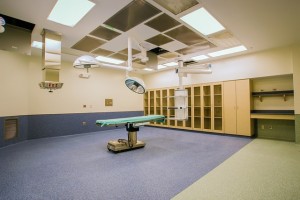In the aviation industry, briefs and checklist are often used to prevent airplane crashes and errors in Hollywood and other communities. The healthcare system in Hollywood is now using a similar method in six area hospitals to improve patient safety and to prevent surgical errors.
As part of a new system introduced in 2008, Hollywood’s Memorial Healthcare System uses what it calls “crew resource management” in operating rooms to prevent surgical errors and improve patient experiences. The management involves using checklists, debriefings, briefings, communication scripts, and structured handoffs as part of surgeries. At first, doctors and surgeons were worried that the “crew resource management” system would make each surgery and procedure longer, but the system has actually been shown to save time. One important way that the system saves time, for example, is ensuring that less equipment is forgotten for surgeries, which means that staff don’t have to leave and reenter the sterile environment of the surgical room to retrieve these times.
Surgical errors can involve many issues:
- Operating on the wrong patient
- Leaving surgical instruments inside a patient
- Failing to sterilize correctly
- Incorrect use of surgical equipment
- Operating on the wrong site
Briefings, checklists, and other components of the “crew resource management” system can help avoid some of these issues and can potentially help prevent injury and medical malpractice claims in Hollywood by ensuring that medical professionals check and re-check information before proceeding with a surgery.
In the Hollywood hospitals using the “crew resource management” system, medical teams go through a multi-step process before any operating room procedure. This process involves:
- Following a script
- Identifying all team members
- Reviewing the specific procedures and any concerns before the surgery
- Reviewing all the details of the surgery before the procedure begins
- Authorizing any team member to stop the surgery at any point if he or she has a concern
- Debriefing after the surgery to discuss any concerns as well as what went wrong and what went right during the process
Going through the process, according to advocates and the health care professionals who use it, can help reduce injuries and negative outcomes in part because the process really emphasizes that everyone in the operating room is part of a team. In previous years, the surgeon was sometimes seen as the leader of the team and everyone else was in a supporting role. If the surgeon made a mistake, this could have dangerous implications. With the new system, anyone on the team can halt the process or voice concerns. With the “crew resource management” system in place, a surgeon cannot ignore concerns or a voiced decision to stop the procedure because the person with the concern can go up the chain of command and can even report the issue to hospital authorities.
The “crew resource management” process has been so successful in Hollywood that it has been transferred to all procedural departments in six of the hospitals using the system. Now, labs, the ICU, critical care units, radiology, cath labs, pathology, and labor and delivery all use the system.
So far, there are no statistics in place to show how many adverse events have been prevented with the “crew resource management” process. However, staff at the Hollywood hospitals have said that the rate of retaining foreign objects has been zero since the system was implemented.
The attorneys at Flaxman Law Group are always pleased to see new systems helping patients avoid injury. Our attorneys also know, however, that not all health care providers and facilities are so careful. If you have been injured in a health care setting, contact our law firm to learn about your rights to compensation.
 Florida Injury Lawyer Blog
Florida Injury Lawyer Blog


